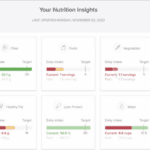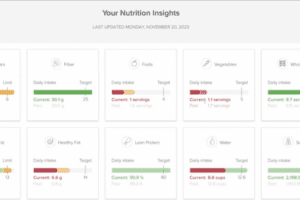The following is a guest article by Stephanie Maharjan, Director of Operations at WellReceived.

While COVID-19 sparked many challenges for healthcare providers across the USA, it highlighted technology’s essential role in patient communication and engagement. In fact, in 2020, research found that just under half of the US population used tech to communicate with their healthcare providers. And this statistic is set to rise as more and more healthcare providers invest in new technology to support, monitor, and diagnose their patients.
So, what does the future of patient communication look like, and what role can we expect technology to play?
Telehealthcare isn’t going anywhere
While some often bill telehealth as a lesser version of in-person care, it’s a versatile solution that can help reduce healthcare inequality, increase accessibility, and engage a new demographic with practitioners.
For the digitally native younger generation, telehealth offers the convenience of accessing medical advice from their phone. For older adults facing mobility or transportation challenges, telehealth provides a valuable opportunity to consult with healthcare professionals without leaving the comfort of their homes. This addresses practical constraints and champions a more accessible healthcare experience.
For healthcare professionals, telehealth can reduce cancellations, as it’s far easier for patients to take a call than time off work for a doctor’s visit. Offering this service can also help growing practices attract more patients.
Customer service is more important than ever
According to SoftwareAdvice, over 77% of people start their search for a new physician by reading online reviews. And with technology allowing patients to explore other options instantly, customer service is more important than ever.
So, what are the key areas that patients review their healthcare providers on? Unsurprisingly, wait times heavily influence a patient’s overall experience, with 84% of people saying that wait time at a doctor’s office is either “somewhat important” or “very important.”
With this in mind, exploring the flow of your practice and prioritizing wait times can have a huge impact on your online reviews. Plus, patients overwhelmingly prefer to speak to a real person over a chatbot, with 86% of US consumers saying they prefer to interact with human staff.
So, exploring an option like a medical answering service can benefit your customer service reviews.
The IoT (Internet of Things) will continue to change healthcare
Wearable devices that allow remote patient monitoring are becoming increasingly popular for those who experience chronic conditions. Over in the UK, wearable devices are creating virtual wards, enabling care home patients to go about their daily routine while being monitored.
While biosensors and smartwatches to gather data remotely are nothing new, 2024 will see a huge increase in the options available to healthcare providers to communicate with patients. Plenty of new technology is emerging within the healthcare industry, from remotely connected inhalers that can send over patient data to predictive and preventative care through IoT devices.
More technology means increased security
As healthcare providers implement more technology into their practice, the need for data security also increases. The American Medical Association found that in 2022, over 75% of patients expressed concern about protecting the privacy of personal health data. So, it’s essential providers have a secure system to manage it.
Ensure that all touch points comply with HIPAA, especially for those using biometric sensors. It’s also critical to discuss HIPAA compliance with external vendors, such as a call answering service, and determine the encryption they use to protect patient data.
Finally, remember that AI assistants also collect patient data, so ensure your practice understands how and where these are stored.
WellReceived is a proud sponsor of Healthcare Scene.














I agree with the points you’ve highlighted regarding the potential benefits of telehealthcare. Telehealth has proven to be a versatile and valuable solution in addressing various healthcare challenges. Here are some additional insights to consider:
Improved Access and Healthcare Equality are critical where telemedicine breaks down geographical barriers and healthcare inequality, especially in rural or underserved locations where access to healthcare facilities may be limited.
The convenience factor cannot be overstated. Telehealth saves time and effort by enabling patients to consult with medical professionals from the comfort of their homes. Individuals with chronic conditions or disabilities or those who live in areas with limited transportation options may find telehealth a significant evolution in healthcare. It allows preventive and continuous care with more frequent check-ins with providers, leading to better health outcomes and potentially reducing the burden of emergency services.
As technology advances, telehealth platforms incorporate features such as remote monitoring devices, AI-assisted diagnostics, and secure data transmission. These innovations enhance the quality of virtual healthcare and broaden its scope for various medical specialties.
Excluding these advantages, it’s important to consider drawbacks like protecting patient privacy and security, resolving internet access disparities, and preserving the human element in healthcare interactions. Telehealth’s ongoing adoption in the healthcare industry has the potential to improve patient outcomes and foster a more open, accessible, and inclusive healthcare system.
In terms of customer service, collaboration with external vendors, including call answering services and AI assistants, necessitates thorough discussions about data encryption and compliance with privacy regulations. Ensuring all touchpoints comply with HIPAA standards is essential to building and maintaining patient trust in the increasingly digital healthcare landscape.
Transparency regarding data collection procedures and strong security measures are essential, considering the growing popularity of AI assistants. To adequately protect patient information, healthcare facilities should invest in secure systems and keep up with the latest cybersecurity techniques.
To summarize, opportunities and challenges are associated with the convergence of customer service, IoT, and increased technology in the healthcare industry. Navigating these changes to achieve success will require striking a balance between robust data security measures, patient experience, and technological advancements.